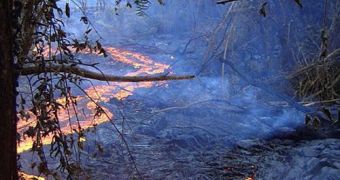According to the conclusions of a new scientific study, it would appear that volcanic eruptions have the ability to influence Earth's climate to a far greater extent than indicated by models and theories.
Geological evidence indicate that there were times in our planet's distant history when the eruption of massive supervolcanoes led to the onset of prolonged periods of global warming. The effect was caused by the release of massive amounts of chemical particles in the air.
These particles, including sulfur, carbon dioxide and methane, are considered to be responsible for creating a greenhouse effect in Earth's atmosphere, eventually leading to warming and climate change.
In the new study, experts determined that volcanoes in fact emit a lot more of these particles than previous models accounted for. For the research, the team investigated the 2010 eruption of the Eyjafjallajökull volcano, in Iceland.
Using a research station in France as a base of operations, the team monitored the enormous ash cloud that was spreading all over Europe, halting air transportation and producing billions of euros in damages to businesses.
The team monitored both the amounts of particles that were released from the volcano at first, and the secondary chemicals that formed when these particles interacted with other compounds in the planetary atmosphere, Our Amazing Planet reports.
Primarily, particles originating the volcano directly were based on sulfuric acid. When they grew sufficiently large, these particles started acting as cloud seeds, producing acid rains, and completely changing the amount and type of precipitations affected areas usually received.
When the final study results were in, the research team was surprised to learn that Eyjafjallajökull had released more than 100 million times more ash particles than initially thought. Experts also found that the cloud-seeding particles formed at lower altitudes, and further away, than thought possible.
“Most previous studies did not properly account for low-altitude impacts of volcanoes,” explains Julien Boulon, who is a research physicist at the French National Center for Scientific Research Laboratory of Meteorology Physics.
He also holds an appointment with the Blaise Pascal University in Aubiere, France. Details of the new investigation were published in the July 11 online issue of the esteemed journal Proceedings of the National Academy of Sciences (PNAS).

 14 DAY TRIAL //
14 DAY TRIAL //